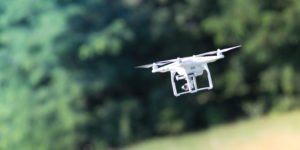New rules have come into force governing how pilots can operate their drones. They harmonise the rules across all EU member states, Norway and Iceland – and will also be mirrored by the UK.
A major change is the removal of the distinction between commercial and recreational use, which may result in an increase in drone uses. The new rules also make it clear where drones can be flown, while also making tracing of ownership more streamlined.
Drone manufacturer DJI has welcomed the changes. “It streamlines different processes and allows customers to travel from country to country without having to worry about different rules in different foreign locations,” said Christian Struwe, the firm’s Director of Public Policy when speaking to the BBC.
Under the rules, even small drones will need to be registered with the relevant aviation authority, which in the UK is the Civil Aviation Authority. This is to ensure that authorities can trace who owns a drone if they are used in an irresponsible way or flown somewhere they are not allowed to be used.
Under the rules, there will be three new types of drone category: high, medium and low:
- Low-risk or open-category drones will not require any authorisation but will be subject to strict operational limitations.
- Medium-risk or specific-category drones will have to have authorisation from the national aviation authority on the basis of a risk assessment.
- High-risk or certified-category drones will need to follow aviation rules, and this will apply to future drone flights with passengers.
The low-risk category, which accounts for the majority of hobbyist drones, will be managed through the CE mark, which is a process for products sold in Europe to ensure they meet health, safety and environmental standards.
But drones within this category will also have additional rules about where they can be flown:
- A1 – drones weighing less than 250g (0.55lb) can be flown over people.
- A2 – drones weighing more than 250g but less than 2kg must be flown at least 50m (164ft) away from people.
- A3 – drones weighing more than 2kg must be flown well away from people
Elliott Corke, Director of Global Drone Training, said the new rules might give people the idea that they could unpack a drone and just fly it: “We would encourage people to read the manual and practise somewhere safe first,” he said.
With a potential increase in the use of drones, safey professionals may want to reassess their airbourne perimeter security processes, especially those in the critical national infrastructure sectors.
The new rules will also be useful for event management safety teams. With hope for physical events and spectators returning to venues for 2021 as vaccines are rolled out across the world, there may be potential for an increase in drone activity that will need to be monitored and evaluated based on the new rules.

